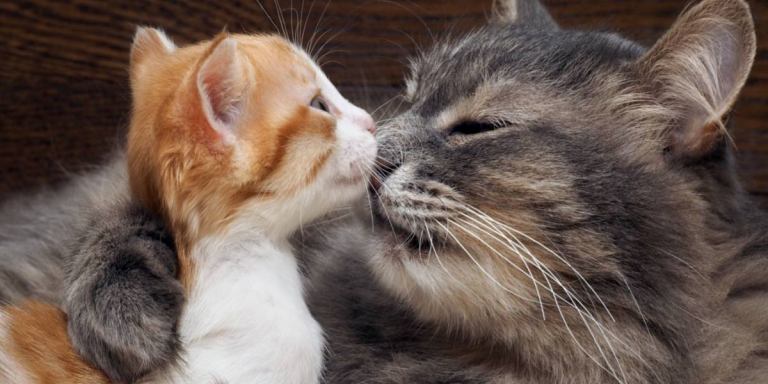
So, you’ve made the exciting decision to get a new kitten, but the thought of introducing them to your adult cat at home can be worrying. The good news is, if you prepare well and introduce them gradually, there is a good chance they will get along.
Introducing a New Kitten to Your Resident Cat

Before you bring your new pet home, you’ll need to prepare your house to make sure it’s kitten-proof!
Choose a room in your home to confine your new kitten while they settle in, such as a spare bedroom. You’ll also want to create a safe place for your existing cat where they can be away from the kitten and have their own space.
The kitten’s room should have food, water, hiding places, a litter box, toys, and a bed. Makes sure there are no hazards (loose wires, open windows, etc.). Toys and bedding should be new and not have the scent of your older cat.
It’s also helpful to keep your new kitten and older cat’s things separate. Cats are very private creatures and don’t like to share litter boxes, so you’ll want to have multiple boxes (one per cat, plus one extra).
Consider a pheromone diffuser such as Feliway to create a calming atmosphere for both cats. The pheromones will prevent your older cat from feeling threatened and help them relax.
Also Read: The Best Homemade Cat Food Recipes For Kidney Disease
How To Make an Older Cat Accept a Kitten?
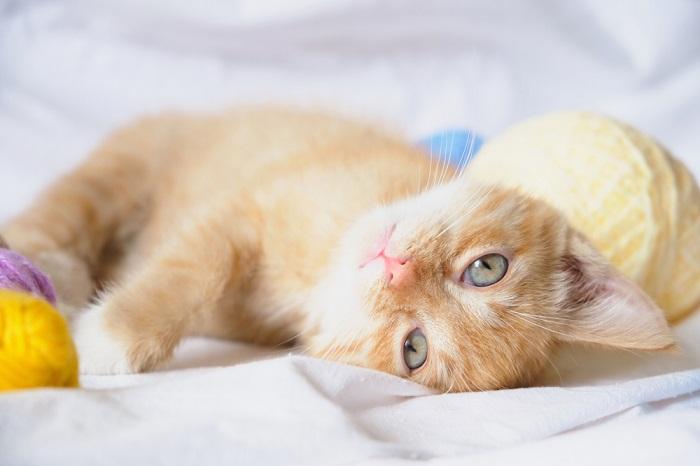
Your new arrival should stay safely confined while they settle in.
At this stage, it can be helpful to introduce your resident cat to the kitten’s scent before they meet face to face.
Cats use scent as a way of detecting whether another cat is in the same social group, so scent swapping helps both cats to recognize each other before meeting and reduces the chances of any disagreements.
You can do this by using your cats’ bedding, such as a blanket. Take a blanket from each cat’s bedding area and place it in the other’s space. Ideally, both cats should show positive behaviors toward the new scent, such as curious sniffing.
How Do You Know if Your Cat Will Accept a Kitten?
Watch out for hissing or avoiding the blanket as these are signs that your cat is not yet ready to accept the kitten and may indicate problems ahead. If this happens, slow down and allow more time for the cats to get used to each other’s scents. To help things along, you can remove the kitten from its room and let your older cat in to explore.
Once the cats are relaxed in the presence of the other’s scent (this can take several days), you can put the blankets back with their rightful owners and you are ready to let your cats meet face to face.
The best way to do this is to let them see each other through a physical barrier, such as a window, slightly open door, baby gate, or anything they can’t get through. It’s best to do this for about a week so the cats have plenty of opportunities for positive associations before proper introductions take place.
Also Read: 11 Best Indoor Cat Breeds For Homebodies
How Long Does It Take for a Cat To Get Used to a New Kitten?
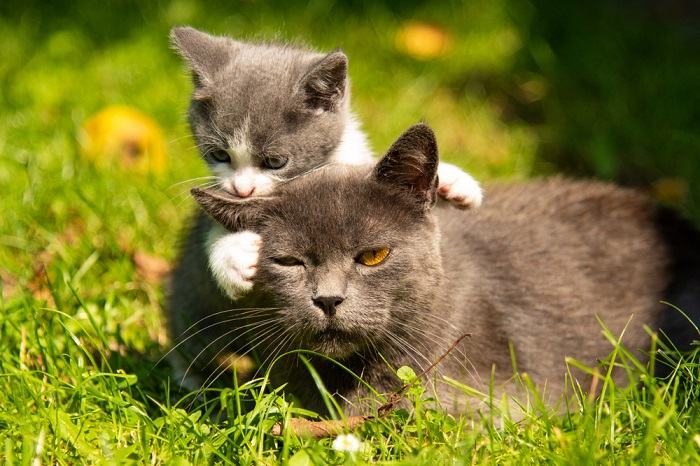
Older cats don’t always appreciate the playful antics of a young kitten.
It can take anything from a few weeks to a few months, and every cat is different. Patience is key when it comes to introducing a new kitten to an older cat, and it takes time for them to live together peacefully.
When you first introduce your cats, always supervise them at all times, and make sure there is an escape route for your older resident cat. This might be something they can climb up or a door into the garden.
The introduction process should be gradual, so follow our tips for a smooth and successful introduction.
Encourage Your Kitten To Get Out And Explore
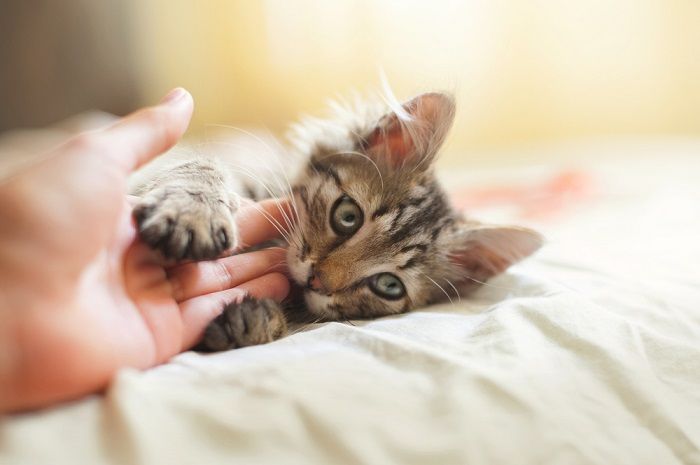
Stay Patient Through the Introductions. It takes time untill cats can learn to live together.
After about a week of confinement, your kitten might start showing signs of frustration, which means it’s time to give them more space. Signs of this include scratching at doors or windows, meowing consistently, pacing, trying to escape, or swiping at you when you leave the room.
If your kitten is comfortable and relaxed in their new environment they will be friendly, purr, lay with their belly up for a rub, play happily, and rub their face on furniture and items around the house to leave their scent.
Let your kitten explore safe parts of the house on their own terms, but always keep a close eye. It’s essential to let your older cat see the kitten doing this—it lets them know that the kitten is also part of the family.
The kitten will sniff around your older cat’s space. Your older cat might not like it—this is completely normal at first! To avoid problems, make sure your cat’s food and water bowls are away from the kitten.
Also Read: Moving Cats To A New Home: A Step-By-Step Guide
This process takes time, for some cats weeks, some take months and some even years. Never force your cats together, as this will only create problems.
They need to mix on their own terms when they are ready and have accepted each other as part of the social group. Being comfortable with one another is the main goal. You can encourage positive interactions with lots of praise, treats, and affection to reinforce the behaviors.
Should I Let My Two Cats Interact Unsupervised?
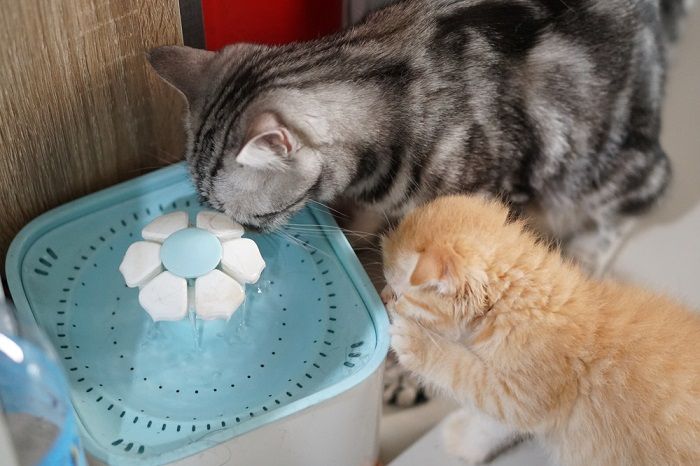
As long as there is no negative behavior, you can start to allow the cats free and unsupervised interactions.
Start by doing this just for short periods—a few minutes at a time—and gradually build up. Allow free and unsupervised interactions as often as you can, separating the cats in between if they start having negative interactions.
If they are friendly—purring, playing nicely together, rubbing their faces on each other—start letting them mix for longer. Both cats should still have their own space, toys, bedding, and litter trays, as well as their own food bowls and water bowls to avoid problems with competition.
Over the space of a few weeks, the cats should settle into their new routine and learn to live in harmony. At this stage, they can come and go around the house as they please. But always monitor for conflicts and if there are any signs of disagreements, make separate spaces available again to both cats.
Also Read: How To Get A Dog And Cat To Bond
What if My Older Cat Does Get Along With My New Kitten?
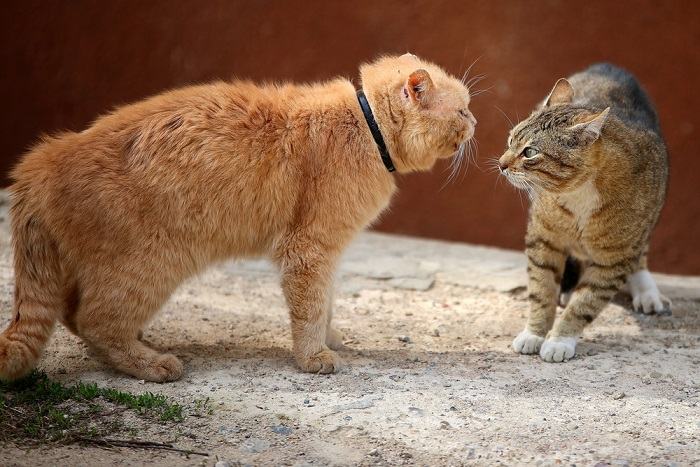
Cats need to establish a hierarchy, and the new kitten needs to know its place.
It can take weeks to months for this to be established and might involve some hissing and swiping from your older cat—this is how they let the kitten know that they are in the dominant position as they were there first.
This is completely normal, but if it extends to anything more there may be a problem. Monitor your cat’s body language. Ears back, wide eyes, and a low tail might suggest your cat is anxious. A scared cat will have their hair up, try to make themselves seem bigger, and hiss or growl.
Don’t be disheartened if the first few encounters don’t go well. It takes time for older cats to get used to a new companion. Rushing the introductions can lead to frustration and problems in the future, so patience is key. Try to time the interactions to when the cats are relaxed and playful. You can always speak to your vet or a behaviorist for some advice.
Also Read: Are My Cats Playing Or Fighting?
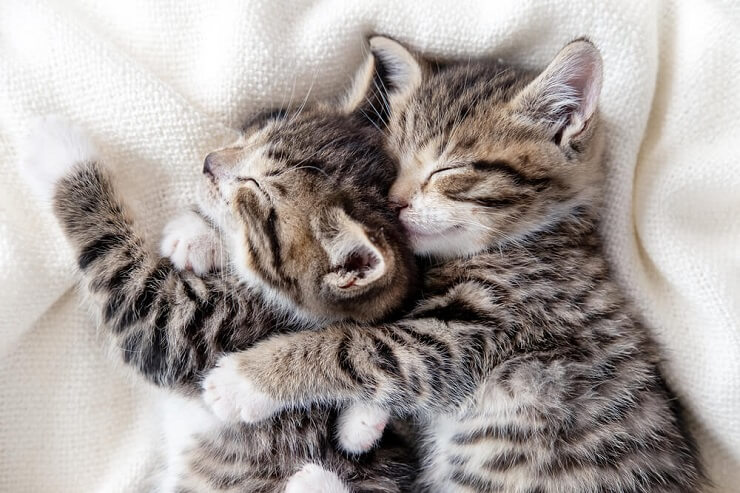
Fortunately, you can use a variety of methods to encourage your cat to sleep according to a schedule that benefits both you and them.
The cats need to get used to each other living in the same space so they can learn to live in harmony, but introductions should be made slowly over a period of weeks to months before they can recognize each other as part of the same social group.
There is likely to be some hissing and disagreements at first, and if you are experiencing ongoing problems then you can seek advice from your vet or a behaviorist.
Also Read: How Much is Pet Insurance for a Cat, and Is It Really Worth It?
Frequently Asked Questions
What do I do if my cat doesn't like my new kitten?
If your older cat shows signs of aggression toward the new kitten, then the cats should be separated. Take a step back with the introductions and make sure that all interactions are supervised. You can help your older cat by scent swapping and introductions through a physical barrier to avoid conflict.
Will my cat hurt my new kitten?
It’s unlikely your cat will do anything to harm the kitten, but kittens are smaller and more fragile. All interactions should be closely supervised, so if there is any indication of conflict they should be separated before any harm can be done.
Do female cats get along better with male or female cats?
There is no evidence to suggest any benefits to mixing male and female cats, as it is very individual as to whether they get along. Sometimes they will get along better with the same sex, although unneutered males are likely to fight.
How to tell if cat introduction is going well?
A positive cat introduction is indicated by the cats displaying relaxed body language, such as slow blinks, minimal hissing or growling, and the absence of aggressive behavior.








I have an existing 3 month old kitten and just adopted a 3 month old kitten. I cant tell if they get along. They use each other’s litter boxes (sometimes together at the same time!) and eat together. But other than eating and litter, its a constant chase and fighting. They bith are instigators, but its the new car that always meows. There is no hissing or growling. But there is something off about my existing kitten. I dont know what to do.
Hi Manjari. Congrats on the new additions to your family! Some cats just take longer to get used to changes than others. If you only had your first kitten for a few weeks before adopting a second, they may just be a little stressed by the change in routine. How many litter boxes do you have? It’s best to have one per cat, plus an extra—you should have three. It may also help to offer separate feeding areas as well as multiples in things like beds, toys, and scratching posts. Your kittens may start to feel more secure when they have “territory” of their own they can claim.
My older cats do not like the kitten, even after months of trying to get them to get along. The kitten just dirtied all over the bed( it is a mess!). The three older cats hiss and hit out at the younger one. I have the kitten in a separate room now. What do I do ? There are plenty of litter boxes around the house 5 of them) Do I have to rehome the kitten ?
Hello there! I apologize for the late reply and hope you, and your feline family, are doing well. That sounds like an incredibly stressful situation. I’d recommend taking steps to reintroduce the cats, as it seems you’re doing, and ensure that all of the cats have the opportunity to use their own separate spaces to promote harmony long-term. We have a guide on introducing cats here, and it covers re-introductions as well.
WHY DO 2 ADULT CATS FROM SAME LITTER , BOTH SUDDENLY REJECT EATING FOOD BOTH WET AND DRY FOODS THE NEXT DAY? THEY BOTH SEEM NORMAL OTHERWISE.THEY REJECT FRISKIES AND TEMPTATIONS PRODUCTS.
Hey Joseph, that’s a good question. There are a variety of possible answers—perhaps both cats happened to have some additional food that you weren’t aware of, for starters. Secondly, if it’s a new batch of food and treats, it may taste different from the food they both prefer. And perhaps both of the cats are unwell, though if they’re acting normal otherwise, that seems unlikely.